READY TO GET STARTED?
REQUEST A FREE ESTIMATE
Fill out the form below or call (888) 466-7849 for a free, no-obligation estimate.

Just as the weather changes with the seasons, pest activity shifts to usher in new groups of active pests. Let’s take a look at what pests are active in your area and some tips to keep them away.
The humidity and moisture that come with early summer is what helps to increase subterranean termite activity. “Swarm season” is in full effect, and this can present a problem for your home.
Summer is the biggest travel time for many. College students are coming back home, and family vacations are planned. This increases the chances of having an incident with bed bugs, and a bed bug infestation is no easy battle.
As the summer weather starts to rev up, American cockroach activity will skyrocket. While they live outdoors, if they find themselves low on food or if the weather experiences a drastic change (extreme heat or excessive rain), they will try move indoors.
Pest infestation can be costly and a major hassle. Contact a professional pest control company like Northwest for a free pest control estimate to protect your home from pests year-round.
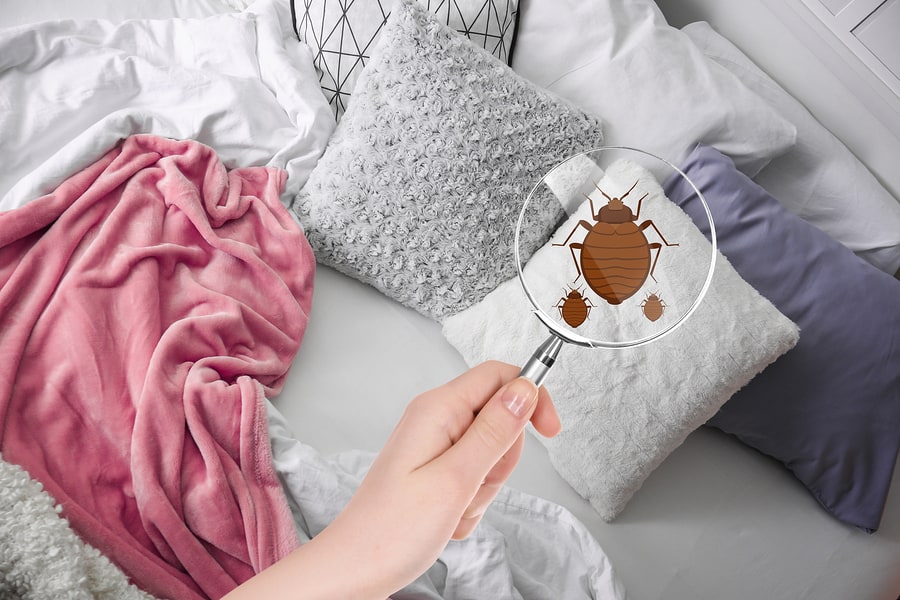
Now that the holidays and spring break are over, travel season is slowing down; but that doesn’t mean that bed bug season is too. Bed bugs are active year-round. Even though you may not be travelling, guests coming to your home can bring bed bugs in too. Bed bugs are nuisance pests that are extremely difficult to get rid of. They are notorious hitchhikers, most commonly catching a ride on bags, purses, luggage, and wheelchairs, but they can also be found on clothing. Anyone can bring bed bugs into your home – an unexpected house guest, your spouse returning from an out of town work trip, or even your child coming home for a visit from college. Once bed bugs have gotten into your home, professional bed bug control is your best option to get rid of them. However, there are things you can do to help keep guests from bringing these pests into your home.
What You Should Know Before Termite Swarming Season
What Attracts Cockroaches To A Clean House?
10 Ways To Care For Your Lawn In Extreme Heat
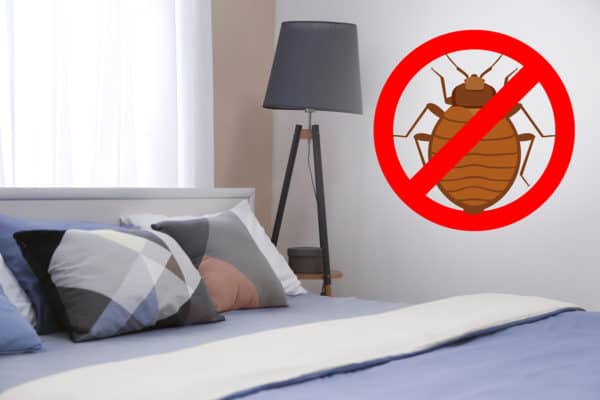
With the increase in travel during the upcoming Spring Break season, the incidence of bed bugs will be on the rise. Bed bugs are difficult to get rid of; notorious hitchhikers that can travel with ease from place to place. They also don’t discriminate – bed bugs have been reported in accommodations ranging from 1 star motels to 5 star luxury resorts and everywhere in between, and have been reported around the world. Most home bed bug infestations occur after travel or are brought in by guests. So what can you do to make sure these pests don’t arrive uninvited after your spring break travels?
There are several resources out there that provide reports of bed bug infestations at hotels and other lodging facilities. The Bed Bug Registry is a free public database of user-submitted bed bug reports from across the United States, Canada, and the United Kingdom. Established in 2006, the Bed Bug Registry has mapped more than 12,000 hotels based on over 20,000 reports from travelers. Other user-generated sites like TripAdvisor also offer reviews that include bed bug reports.
Bed bugs are small, only about 4 to 5 mm in size. They are the size of a standard pearl. They have flat, oval-shaped bodies that are red or brown in color. Before traveling, download the EPA’s wallet-sized bed bug identification card for reference.
Where do you look for bed bugs? Bed bugs are excellent hiders. They are nocturnal so finding them during the day can be a challenge. Always check your room thoroughly before unloading your luggage. Bed bugs are usually found within 20 feet of a host (usually a bed). Bed bugs are commonly found in the seams of mattresses, in the cracks of headboards, in baseboards, and in the folds of upholstered furniture. They can also be found in drawers and closets and even in the fabric of luggage rack straps. Be sure to check each of these places thoroughly and use a flashlight if possible. Leave your luggage outside the door while you check for bed bugs. Be sure to also check the sheets and mattress for small brown spots sometimes tinged with blood. This is a tell-tale sign of a bed bug problem.
If you find evidence of bed bugs in your room, notify the front desk and hotel manager immediately. Request to be transferred to another room that is not above, below, or adjacent to the infested room as bed bugs can travel through cracks in the ceiling, walls, and floor. If you aren’t comfortable, request a refund and find other accommodations. Request that the hotel launder your clothes immediately. Place all your garments in a sealed bag and put them in the dryer again when you get home. Steam your luggage, as well.
One way to avoid bed bugs is to take steps to prevent them in the first place. Pack a large trash bag with your luggage and store your luggage in it while in the room. Don’t leave any clothes, purses, or computer bags on upholstered furniture in your room. Keep all bags closed when not in use. Double check your bags and clothing before you repack. Once you return home, immediately unpack your dirty clothes directly into the washer and then dry them on high heat. Store your suitcases away from any living areas such as in the garage or the basement.
Bed bugs can be extremely difficult to get rid of. If you suspect you have a bed bug problem, contact a professional pest control company who can provide you with a thorough inspection and the appropriate treatment plan for your situation.
What Attracts Cockroaches To A Clean House?
Is Your Hotel On The Bed Bug Registry?
A Step-By-Step Guide To Spring Lawn Care
So You Think You Have Bed Bugs: Now What?
What Are Your Termite Treatment Options?

The time for holiday travel is quickly approaching. The panic, the shopping, and the cooking are all becoming a reality once again and you don’t have time for much else. The last thing you need to add to your ever growing holiday to-do list is a bed bug infestation. The best thing you can do is arm yourself with knowledge to be ahead of the game and use the proven tricks below when returning from your travels!
When travelling back home from your holiday visits, leave suitcases in a garage or driveway and take clothing straight to the laundry room to be washed in warm water. This is especially important for college students coming home for winter break.
Bed bug infestations are very serious and require a thorough inspection and intense treatment. If you suspect that you have an issue with bed bugs, call a licensed bed bug specialist immediately.
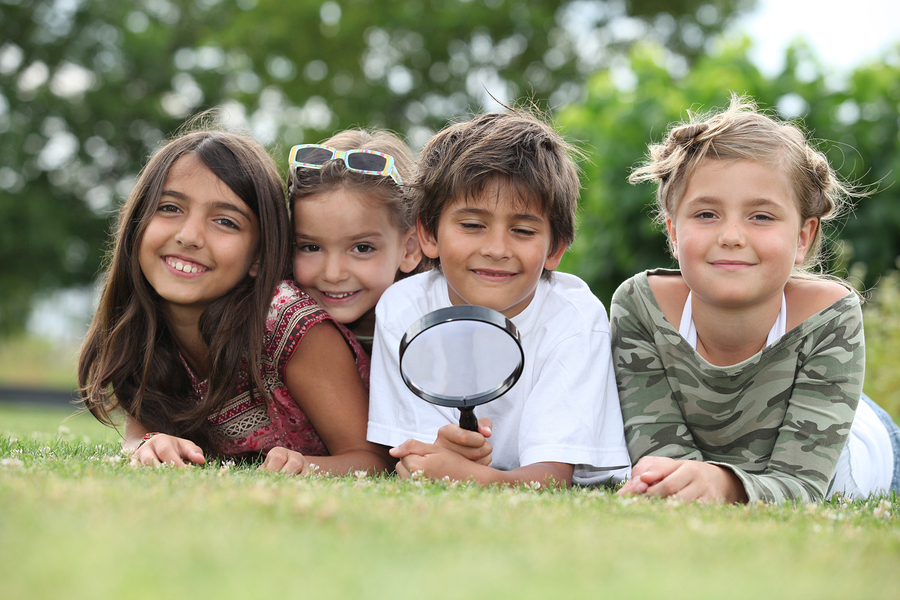
As school winds down, your summer camp prep is ramping up. As you go through lists and double check that you have everything your kiddos will need to have the best summer, take precautions to make sure they don’t bring home any stowaways. Read below for ideas on how to prevent the two most common camp nuisances: lice and bed bugs.
Lice spread by direct contact with hair of an infested person. Be sure to remind children away at camp to not share personal items such as hats, brushes, and combs.
Cabins and other camper belongings are the perfect hiding and breeding sites for bed bugs. They travel in the belongings of other campers and make their way to your home in the luggage of your camper.
We hope these tips benefit you and your camper this summer! If you suspect that you have a lice or bed bug infestation, call a pest control company to schedule an inspection as soon as possible.
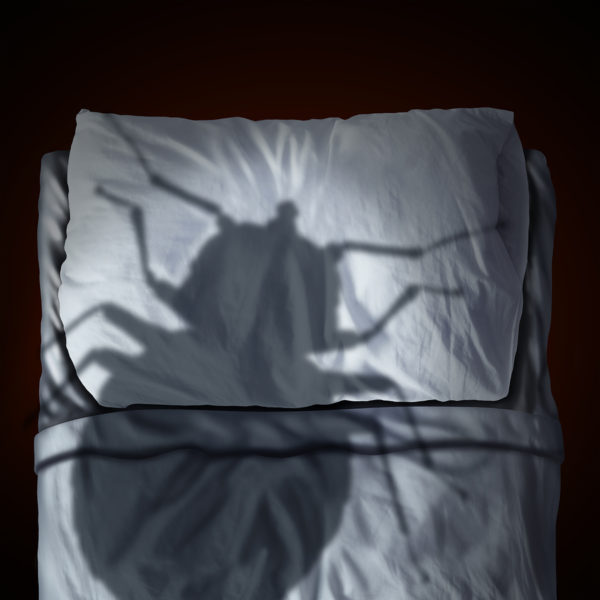
For many of us, the holiday season is a time of joy. It is also a time for travel as we look forward to spending time with family and friends. One thing that can damper our holiday season is dealing with unwanted visitors – no, not that cranky Scrooge of a relative – but bed bugs! Bed bugs are notorious hitchhikers, tagging along with unsuspecting travelers on their clothes and luggage. As we enter the biggest travel season of the year, check out these tips for preventing bed bugs and preserving your holiday cheer.
When you have guests staying with you, make sure you are prepared for the possibility of bed bugs being brought in with them. Don’t put your guests’ coats and bags on the bed. Instead, clean out a closet and use it to store their belongings. If you have to put their items on the bed, lay a sheet down first. It can be cleaned later. Place a plastic mat by the door for them to place their shoes on. If possible, provide luggage racks for them to use to store their belongings on. Use a bed bug mattress cover on any beds your guests will be using. If your guests will be sleeping on the couch, lay a sheet down over it first.
Once your guests leave, make sure to go behind anywhere they kept coats or luggage and clean. Vacuum closets where luggage and coats were kept. Vacuum the beds and couches where they slept. Seal the vacuum bags immediately and dispose of them outside. If you used sheets under luggage or on your couches, wash them in hot water and dry them on high heat. Wash the plastic mat you used for their shoes with hot, soapy water.
Whether you have guests who just left or you are the guest yourself, check your surroundings for signs of bed bugs. Inspect the mattress, box springs, and headboard, especially around edges and seams. Make sure to check couch cushions and chairs, as well. The most common sign of bed bugs is small, rust colored spots. Avoid using dresser drawers if possible. When you arrive at your destination, especially if you have been in a heavily populated area (subway, bus, airport, etc) check your shoes, jackets, hats, and luggage immediately. Be sure to check around zippers and seams. If you spot bed bugs, remove the clothing immediately and wash in hot water and dry on high heat. Vacuum luggage and seal and dispose of the vacuum bag immediately. If you are going to be a guest at a hotel or other lodging accommodation, you can also check the Bed Bug Registry, which is a free user-submitted database of bed bug reports across the US and Canada.
Once you arrive home from your travels, unpack your luggage and change your clothes immediately. Wash everything in hot water and dry on high heat. The heat of the water and air from the dryer will kill any bed bugs that may be lingering around. Once unpacked, vacuum or steam your luggage and seal it in plastic bags or containers. Store your luggage outside the home (in a garage, shed, etc) until you need to use them again.
Bed bugs are resilient and can be extremely difficult to get rid of. If you suspect you have a bed bug problem, call a pest control professional who can come in and provide you with a thorough evaluation and comprehensive treatment plan.

While many of us are planning vacations or trips to visit family for the upcoming holiday season, bed bugs are planning their vacation too, as unwanted guests that hitchhike their way into your home from hotel rooms, rented houses & condos, families’ houses, and college dorms. So what can you do to minimize your risk? Follow these bed bug prevention tips:
Inspect your accommodations. Check your hotel room or rental for signs of bed bugs before bringing your luggage in. From high end hotels to small B&Bs or rental homes, any property has the potential to be bed bug infested – so it’s important to check every type of accommodation. Bed bugs can be found in furniture (usually cracks & crevices), including beds, end tables, sofas & chairs, dressers, etc. Be especially sure to check around mattress corners, looking for evidence of bed bugs – usually distinguished by very small, dark-colored stains. Another indication of bed bugs is skin shells that have been shed during their growth phases.
If you suspect that your room has bed bugs, ask to be moved or consider another hotel or rental.
Even if you find no traces of bed bugs, be careful when unpacking your clothing. Use provided luggage racks rather than placing suitcases on the beds or furniture or thoroughly inspect dressers before placing clothing in drawers.
Don’t unpack when you return home. Resist the urge to bring your luggage inside your home when returning from a trip. Instead, unpack outside of your home, wash all clothing right away and be sure to run everything through a high-heat dryer cycle (bed bugs cannot withstand high temperatures). Then store suitcases outside if possible, like in your garage or a storage closet. Another option, if you don’t have anywhere to keep luggage outside your home, is to seal suitcases in large, plastic storage bags before bringing inside.
If you’re experiencing bed bug bites or seeing evidence of bed bugs, contact a professional bed bug control company to access the situation. DIY bed bug control is not recommended; an exterminator can determine the best treatment plan and give you recommendations to prevent future infestations.
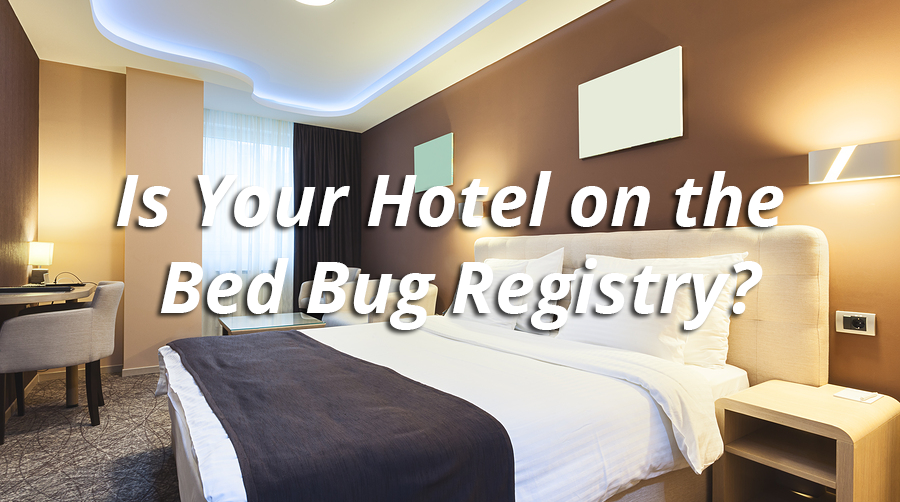
Before making spring break or summer travel plans, consider checking the bed bug registry to see if your hotel is on the list.
The Bed Bug Registry is a website dedicated to reporting bed bug activity across the United States and Canada, for both hotels and other travel accommodations, as well as rental properties. The site offers a free, neutral platform where travelers can report bed bugs in a public environment. Since 2006, the Bed Bug Registry collected over 20,000 reports of bed bugs in 12,000 locations.
Because bed beds are excellent travelers, it’s likely you’ll bring them back home with you if staying in a bed bug infested hotel. So the first step in bed bug prevention is being able to find and identify them. Bed bugs are red to brown in color, depending on when their last blood meal was, flat and oval in shape, and about 1/4 inch in size or smaller. They like to hide in dark, undisturbed areas like the cracks and crevices of bed frames, headboards, mattresses, box springs, furniture, and upholstered items like chairs and storage benches. They can also be found behind baseboards, under carpet, behind electrical switch plates, and in under-bed storage containers. A sure sign of bed bugs are small, dark spots on sheets and pillowcases. If beds bugs are found are suspected, ask to be moved to another room or consider getting a refund and moving to another hotel.
Even if you don’t find bed bugs in your hotel room, there are steps you can take when you get home to prevent a bed bug infestation. Don’t bring your luggage inside your home. Instead, remove all of your clothing, wash immediately and run through a high-heat dryer cycles (bed bugs can’t survive in high temperatures), and then vacuum your suitcase and store outside your home in sealed bags or containers, like in the garage or a storage closet.
If you suspect a bed bug problem in your home, contact an exterminator immediately. Bed bugs are best eliminated when the infestation is identified and controlled early and DIY bed bug treatments are not recommended.
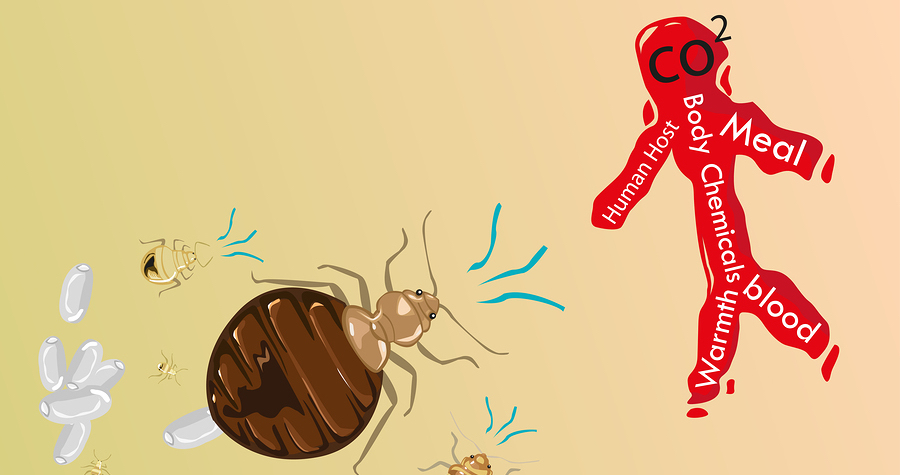
Bed bugs are an ongoing problem in the pest industry with no foreseeable changes in the near future. Infestation cases are on the rise and will most likely increase with the upcoming holiday season. So as your family makes plans for traveling, relatives visiting, and students coming home from college, it’s important to know how to keep your home protected from the ultimate hitchhiker: the bed bug.
If you’ve never seen a bed bug, you may have a hard time finding or identifying one. Keep reading to find out what bed bugs look like, where to find them, what threats they pose, and how to prevent and control them.
Red to brown in color (red after they’ve had a blood meal), six legs, flat and oval in shape, about 1/4″ in size or smaller

Cracks and crevices close to a human food source – behind baseboards, in furniture, bed frames, mattresses & boxsprings, suitcases, boxes (like shoe boxes or under bed storage), behind electrical switch plates
Bed bugs are excellent travelers and often go unnoticed since they’re nocturnal. They typically appear at night once you’re sleeping to feed and often leave behind red, itchy welts on the skin when bitten. Although they don’t transmit diseases, bed bugs are extremely elusive and hard to get rid of once an infestation occurs and can’t be eradicated with do-it-yourself treatments.
Don’t bring suitcases inside your home after traveling. Remove all clothes first, wash them, and run through a high heat dryer cycle. Bed bugs cannot withstand high temperatures so this ensures you’re killing any that may have travelled back with you from trips, relatives’ homes, school, etc. Vacuum suitcases and leave them somewhere outside your home, preferably in sealed bags or containers, until you need them again. Also, make a habit of inspecting your bed for signs. Dark (blood) spots on sheets, pillows or other bedding is the most obvious indicator of a bed bug infestation. If you’re seeing this, call an exterminator immediately that specialized in bed bug treatment and control.
Because of the elusive nature of bed bugs and their ability to survive in extreme conditions (bed bugs can live for a year or more without eating and can withstand a wide range of temperatures from nearly freezing to 113 degrees Fahrenheit), they can’t be eliminated through do-it-yourself methods. If you’ve identified a bed bug infestation in your home or business, or suspect bed bug activity, call a professional pest control company. A proper inspection is needed to identify all areas of infestation. After an in-depth inspection, a treatment and control plan can be implemented, usually including multiple chemical and/or heat treatments and inspections over several weeks. As part of the treatment plan, you may be asked by your exterminator to remove or reduce clutter, install protective encasements to your mattresses and/or boxsprings, and launder bedding and/or clothing. You should also be advised not to throw out any infested furniture, clothes or other items; this can cause the spread of bed bugs to other locations. It’s also not recommended to purchase new furniture throughout the treatment process as these items will likely become infested with bed bugs.